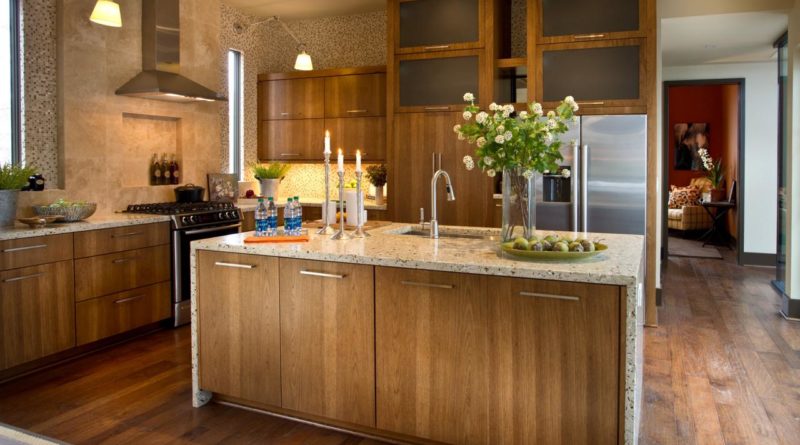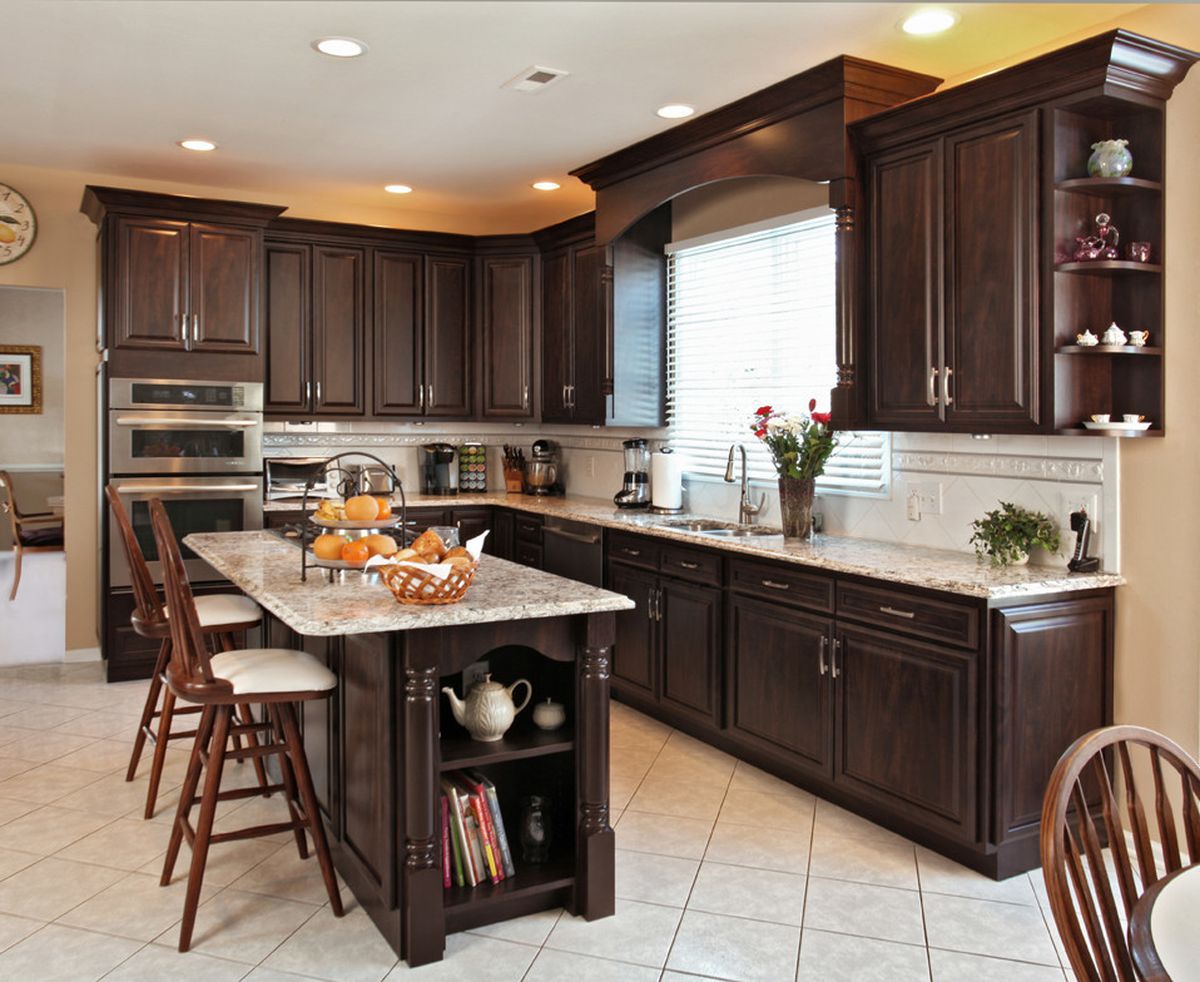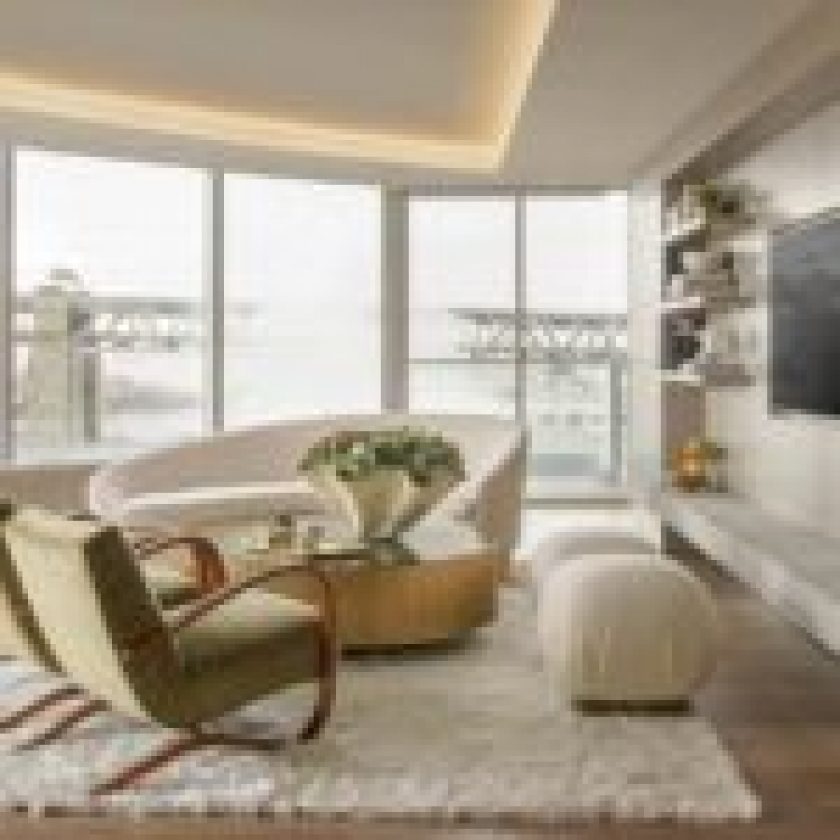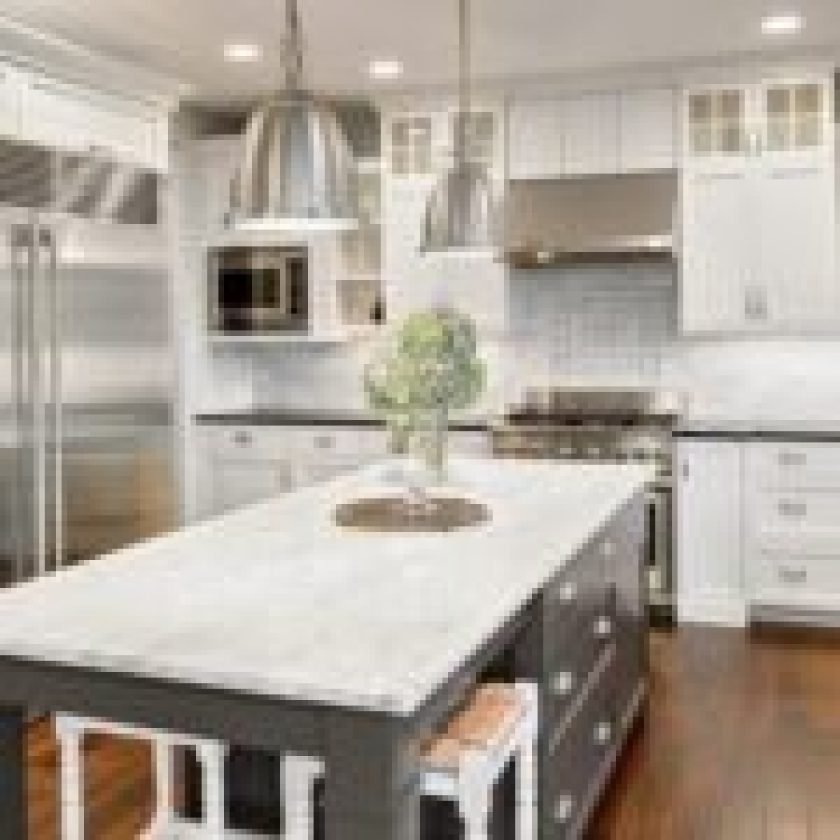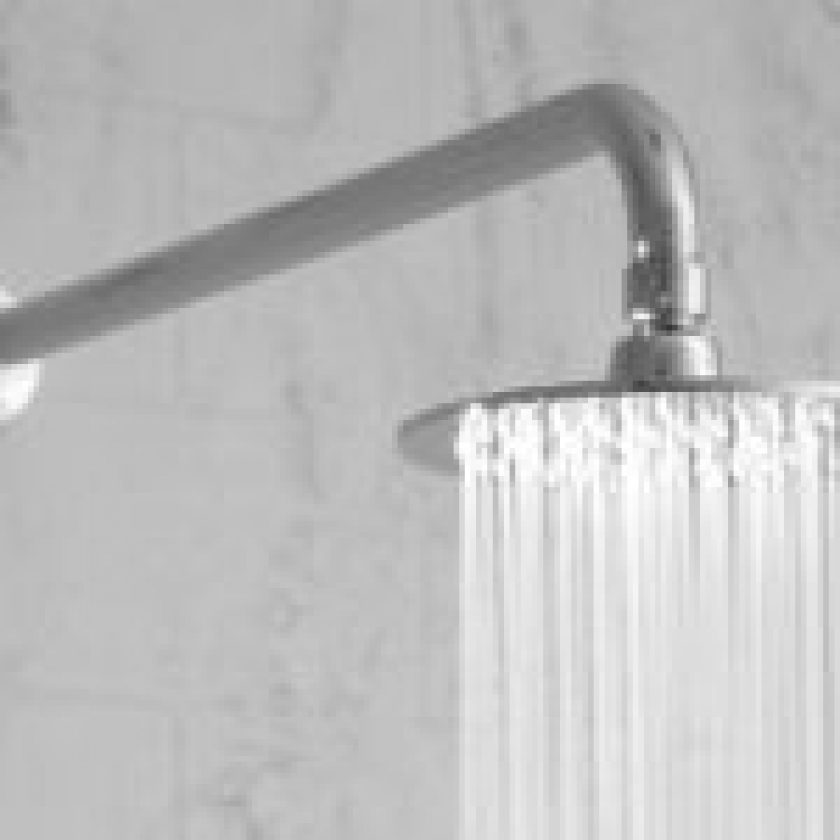Building a new kitchen or renovating an existing one requires you to make a number of choices. The material for the cabinets is one of these. Do you use full wood-based pieces or a combination of wood and overlays? This is not a decision that can be made lightly, as you have several factors to consider at Live enhanced.
Wood
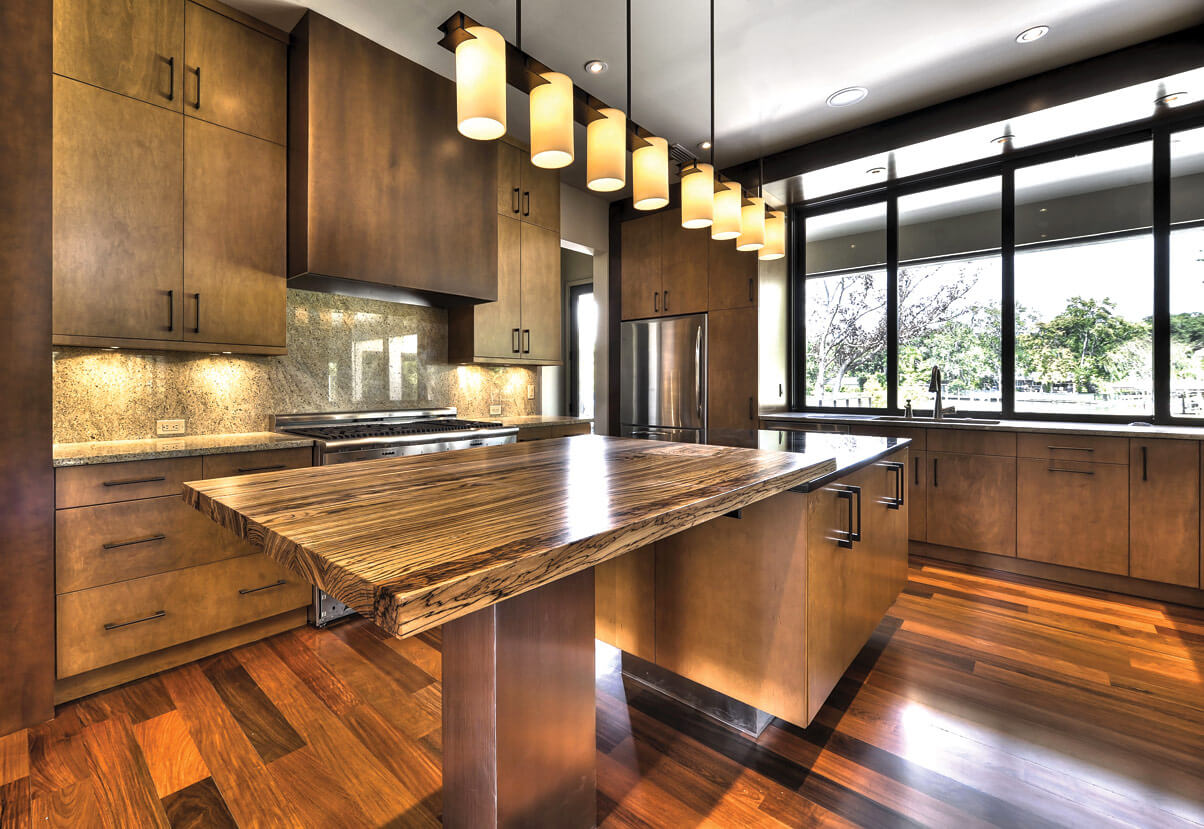
source: midcityeast.com
Wood is the number 1 choice for kitchen cabinets, but there are different options, all with good reasons why and why not to use them.
Hardwood
Solid wood kitchen cabinets are by far the most popular choice, and it’s easy to see why. Durable, long-lasting, and easy to install, they feature in most kitchens. The best options for solid wood are maple, spruce, cherry, birch, pine, beech, oak, and hickory.
The downside of hardwood is that it’s an expensive material, and not ideal for kitchens prone to humidity as it can warp and buckle due to the heat.
Fiberboard
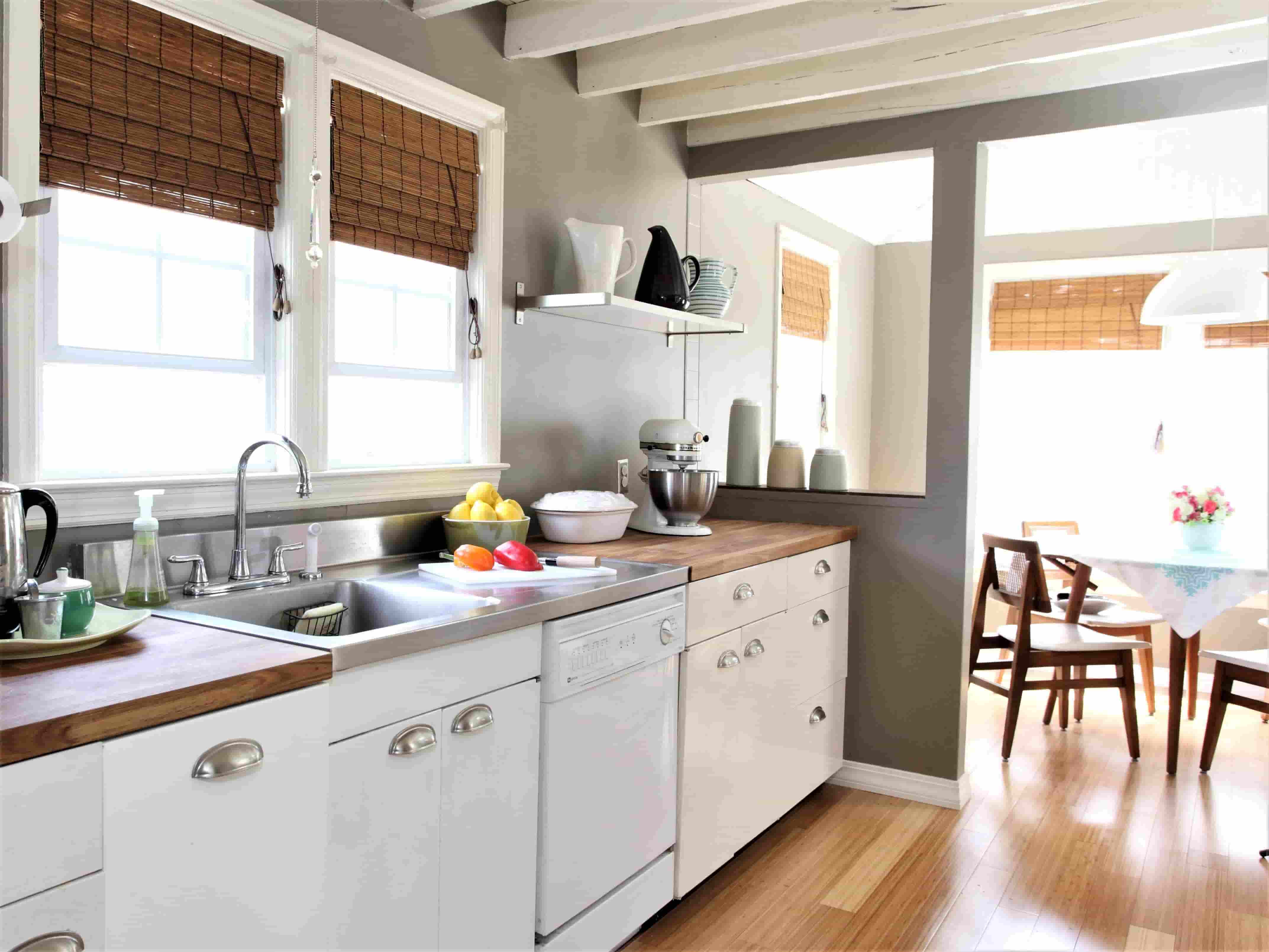
source: thespruce.com
Ikea must know something about furniture, as they made 41.3 billion euros in revenue last year. What material is found in most of its products? Fiberboard. Unlike hardwood, it’s inexpensive, while still remaining durable. It’s made from recycled fibers, wax, and resin.
One of the benefits of this material is that it has a smooth surface, which makes it easy to paint. The challenge when using fiberboard is that it’s not as strong as solid wood. If cabinets or drawers are heavily loaded, some sagging may occur.
Plywood
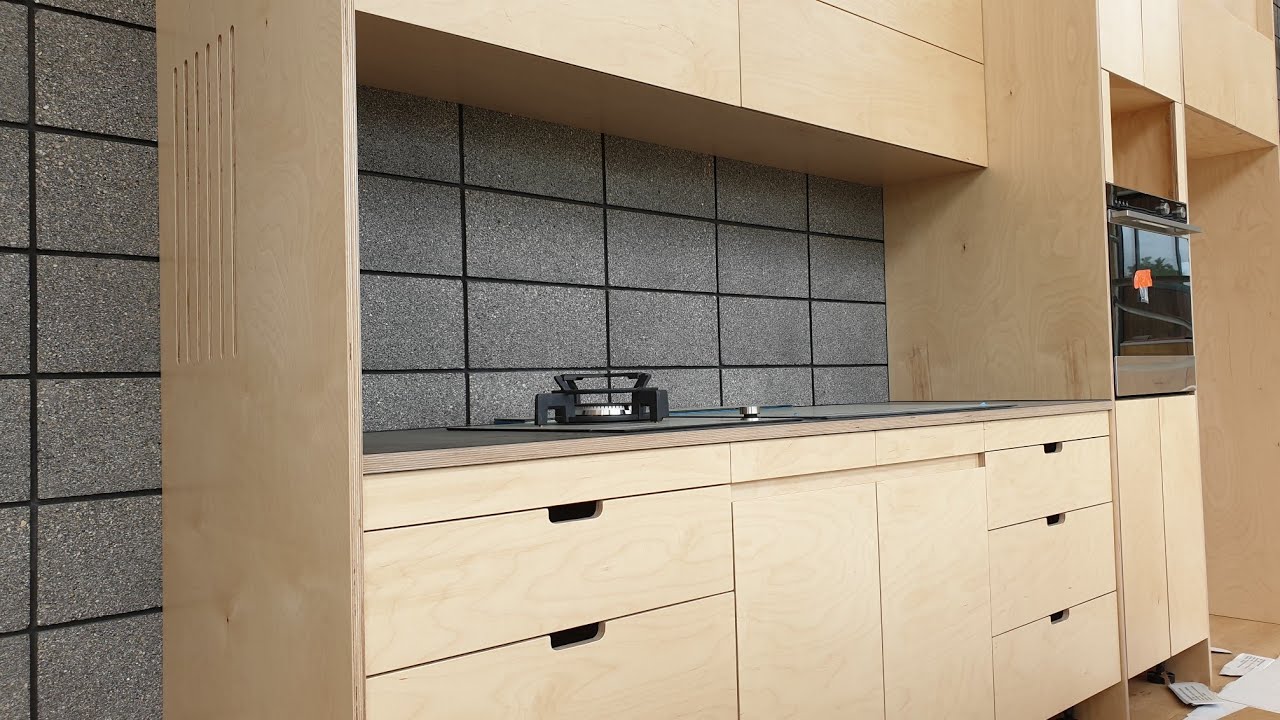
source: pinterest.com
A commonly used material for kitchen cabinets is plywood. By using a combination of glue, heat, and pressure, thin layers of wood are laminated on top of each other in alternating angles, which creates strength. It’s easy to install, is moisture resistant, and has the highest strength-to-weight ratio of all the materials mentioned.
Care needs to be taken when working with plywood as different thicknesses need to be used for various places in the cabinet. The backs need to be thinner than the walls and bases. This can occasionally cause gaps where the boards combine.
Overlay Materials
An alternate to all-wood cabinets is to consider overlay materials.
Wood Veneer
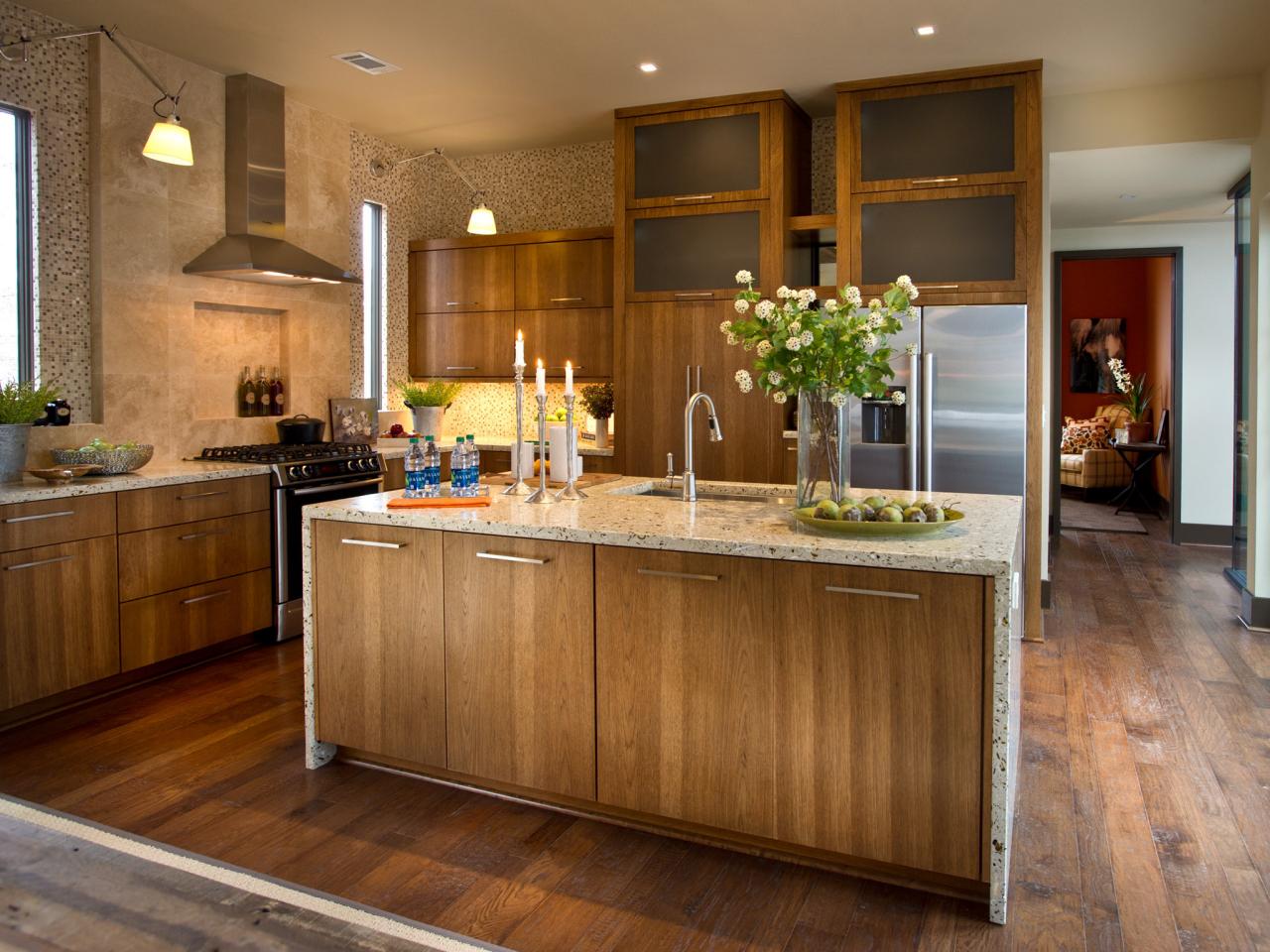
source: hgtv.com
A very attractive material, wood veneer is a thin layer of solid hardwood that’s been peeled from a log. An amount of 2mm is pressed or glued on top of particleboard or fiberboard to create flat panels. Remember, wood veneer is a finish only, so it’s not suitable for the inside of the cabinet. Use another material like plywood to complete the job.
Laminate
source: mcall.com
Three thin sheets of plastic, or resin, sandwiched together, create a heavy, durable overlay. Attach it to plywood or fiberboard in a similar fashion to wood veneer. Laminate is highly affordable and looks great in all kitchens. It’s easy to keep clean and is scratch and fade-proof.
The challenge with laminate is that if it’s not installed correctly, the edges can peel up. Once again, it’s for the outer part of the cabinet only.
Wood or Overlay?
You have two initial choices. Do you spend the extra money to have kitchen cabinets made from heavy, durable wood? Or do you choose overlay materials that provide a similar look, but as a more cost-effective option?
The best decision is most likely a combination of the two. Use solid wood for the lower placed ones, and overlays for the higher, and most visual kitchen cabinets.

